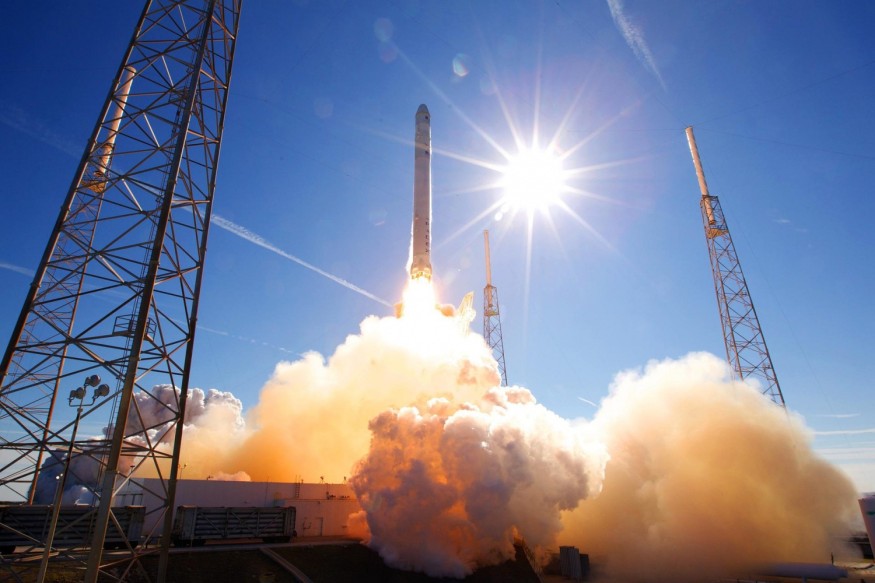The long-awaited reentry of Long March 5B happened on July 30 over the Indian Ocean, bringing the rocket's brief but contentious orbital stay to an end. Yet, China is silent about it. The end-of-life scenario of the rocket was built into the design. But the critics argue that the disposal strategy was risky because the large rocket did not completely burn up upon reentry.
US Space Command Updates on Long March 5B Debris Location
In a tweet by the US Space Command, the agency confirmed that the People's Republic of China (PRC) Long March 5B (CZ-5B) reentered the Indian Ocean. The approximate reentry was at 12:45 pm EDT. The tweet included #PRC redirecting the readers to the Chinese officials for further details on the reentry's technical aspects, such as potential debris dispersal + impact location.
#USSPACECOM can confirm the People’s Republic of China (PRC) Long March 5B (CZ-5B) re-entered over the Indian Ocean at approx 10:45 am MDT on 7/30. We refer you to the #PRC for further details on the reentry’s technical aspects such as potential debris dispersal+ impact location.
— U.S. Space Command (@US_SpaceCom) July 30, 2022
The Aerospace Corporation's Center for Orbital Reentry and Debris Studies estimated that the Long March 5B likely survived all the way to the ground to the tune of 5.5 tons to 9.9 tons. Given where the Long March 5B reentered, it was possible that the falling rocket chunks caused some injuries or infrastructure damage.
One observer appeared to capture the rocket's disintegration from Kuching, Malaysia's Sarawak state. The captured event was posted on Twitter.
In a Twitter post, astrophysicist and satellite tracker Jonathan McDowell, of the Harvard-Smithsonian Center for Astrophysics, said that the video from Kuching implies it was high in the atmosphere at the time. The debris would land hundreds of kilometers along the track, near Sibu, Bintulu, or even Brunei. In another tweet, he said it's unlikely but not impossible that one or more chunks will hit a population center.
Reentry looks to have been observed from Kuching in Sarawak, Malaysia. Debris would land downrange in northern Borneo, possbily Brunei. [corrected] https://t.co/sX6m1XMYoO
— Jonathan McDowell (@planet4589) July 30, 2022
The Chinese space officials said that the rocket reentered the atmosphere at 119.0 degrees east longitude and 9.1 degrees north latitude. The estimated location is over open water, just off the coast of Palawan Island, Philippines.

Experts Commentaries on China's Long March 5B Rocket Disposal
Darren McKnight, a senior technical fellow at the California-based tracking company LeoLabs, said during the discussion at The Aerospace Corporation livestream that there should have been some fuel left on board to control the reentry. He added that it was the responsible thing to do.
In a statement issued by NASA Administrator Bill Nelson, it was confirmed that China did not share specific trajectory information. According to him, they must do their part to share such information ahead of time as it is critical for responsible space exploration and the safety of people on Earth.
"All spacefaring nations should follow established best practices, and do their part to share this type of information in advance to allow reliable predictions of potential debris impact risk, especially for heavy-lift vehicles, like the Long March 5B, which carry a significant risk of loss of life and property," Nelson said.
Earlier, experts said that the surviving Long March 5B fragments would hit the ground or water at speeds of several hundred miles per hour. These impacts will be powerful and destructive but will not be catastrophic.
Ted Muelhaupt, a consultant with The Aerospace Corporation's Corporate Chief Engineer's Office, stated that there is a 99.5 percent chance that nothing will happen.
RELATED ARTICLE : China's Moon Landing Mission Might Use Modified Version of Long March 5 Rockets, Chief Designer Says
Check out more news and information on Space in Science Times.
© 2025 ScienceTimes.com All rights reserved. Do not reproduce without permission. The window to the world of Science Times.












